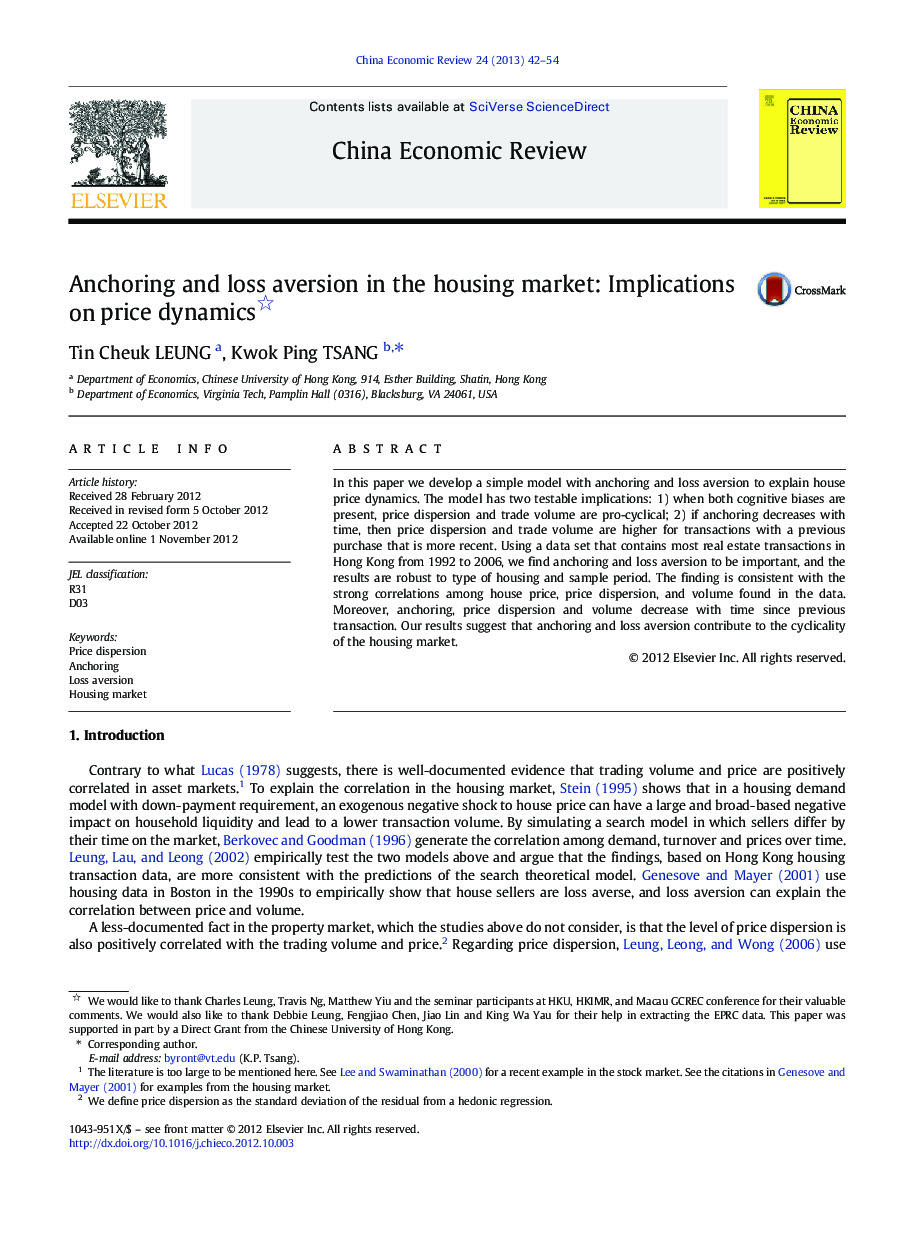| Article ID | Journal | Published Year | Pages | File Type |
|---|---|---|---|---|
| 5047695 | China Economic Review | 2013 | 13 Pages |
In this paper we develop a simple model with anchoring and loss aversion to explain house price dynamics. The model has two testable implications: 1) when both cognitive biases are present, price dispersion and trade volume are pro-cyclical; 2) if anchoring decreases with time, then price dispersion and trade volume are higher for transactions with a previous purchase that is more recent. Using a data set that contains most real estate transactions in Hong Kong from 1992 to 2006, we find anchoring and loss aversion to be important, and the results are robust to type of housing and sample period. The finding is consistent with the strong correlations among house price, price dispersion, and volume found in the data. Moreover, anchoring, price dispersion and volume decrease with time since previous transaction. Our results suggest that anchoring and loss aversion contribute to the cyclicality of the housing market.
⺠A simple model with anchoring and loss aversion to explain house price dynamics. ⺠Data: real estate transaction in Hong Kong from 1992 to 2006. ⺠Statistically and economically important anchoring and loss aversion. ⺠Consistent with the strong correlations among house price, price dispersion, and volume.
